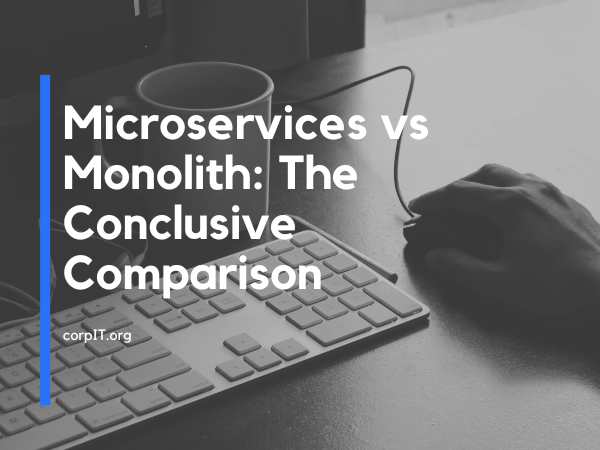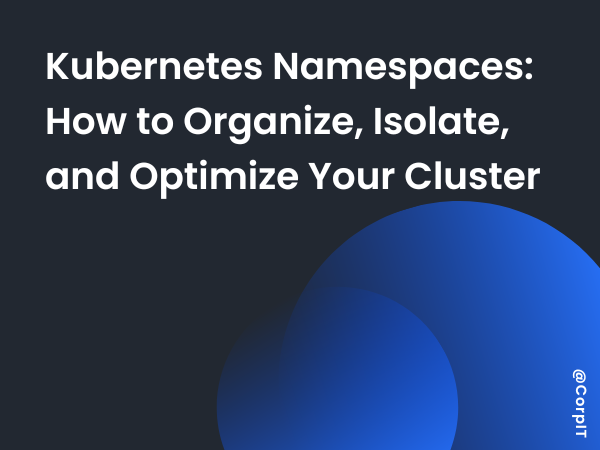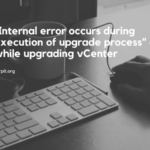Modern software required modern technology. To run modern architecture we cannot depend upon the old methodology. Already tech giants like Netflix, Amazon, and Oracle started using the microservices approach in building applications. With the help of microservices, we can develop software that is fast and also help in reducing the cost.
This article will discuss details about microservices vs monoliths. We also look into the different paradigms of each one.
Table of Contents
What are Microservices?
It is a new methodology for building complex applications. In this approach, we build applications in small modules or services. Each service is independent and built separately. With the help of API endpoints/HTTP protocols, these services communicate with each other.
As each service is an independent part we can host each service based on the application requirement. Like some services are in the cloud, some are on-premises on bare metal hardware, Some services are in the cloud, and some services are in a virtualized environment.

From the above diagram, you can understand the architecture of Microservices and how we can deploy them.
What is Monolithic?
Monolith comes from the Greek word monólithos which means “made of one stone”. So in this approach, our complex applications are one big set of code. All the modules are coded in this big code set. All these modules are tightly coupled with each other. In a Monolithic application, there are three main pillars a database, a user interface, and a server-side application.

From the above image, you can understand the basic architecture of a Monolithic application.
Microservices vs Monoliths: Architectures
Before going into depth about Microservices and Monoliths. Let’s discuss the architecture of each of these approaches. There are a few differences in both approaches that will discuss here.
First, let’s go with the Monolithic application. This is a single build of a unified code. All the modules are coded in a single EAR (Enterprise Archive), WAR (Web Archive), or a JAR(Java Archive) file.
On the other hand, Microservices are divided into small modules known as services. These services are independent and work in isolation. With the help of API endpoints/HTTP protocols, they communicate with each other.
Microservices vs Monoliths: Pros and Cons
First let discuss about the monolithic architecture pros and cons
| Monolithic Architecture Pros | Monolithic Architecture Cons |
| Easy to developed and deploy | Slow Build and Release cycle |
| As the application is a single unified code it enhances the overall application Performance | Testing becomes hard as it is a single unified code. |
| You need to host the application in one place. |
Now let see the microservice architecture pros and cons
| Microservice Architecture Pros | Microservice Architecture Cons |
| All modules are divided into small services and they are independent of each other. | Difficult to manage a large number of services. |
| Dynamic scaling | Complex testing |
| Due to small services, we can build and release updates fast. | There is a higher chance of failure during communication between different services. |
Microservices: Use Cases
Microservices: Use cases
Microservices are widely used by various tech giants. The implementation of Microservices varies in each tech giant based on their requirement. But some of the significant application which runs on Microservices and we used those apps on daily basis are mentioned below:
- Netflix
- Spotify
- Uber
- AWS
Spotify Case Study
There is a detailed video about the transformation of Monolithic to Microservices in Spotify. You can watch the video from the below link:
Microservices vs Monoliths: Deployment Strategies
In the monolith approach, we build a single large Unicode application. That application will be hosted on a single server. Compare to Microservices the deployment of the Monolic application is far more simple.
When building Microservices, we need to think about and design the architecture in a scalable manner. For the monolithic approach, we know how to create an application. But when we talk about microservices things are a bit different. Typically, we use 3 approaches to build the application.
One service-One host
We hosted each service in a single virtual machine to get isolation. So on a single host, we can create multiple virtual machines and run these services. As each service is running on a different virtual machine. It is easy to optimize and maintain.
One Service-One Container
For the Docker and Kubernetes enthusiast. We have a One Service-One Container approach. Here we host a single service in a single container. For that, we can host multiple containers in a single host. This will optimize the price.
Serverless Deployment
Not many applications are developed with this strategy. But this is one of the easiest and most cost-effective strategies. We link each service to a stateless and serverless cloud system. So we only bill once the request is made in that particular serverless instance. Lambda is a stellar example of a serverless service.
| Microservices | Monoliths | |
| Architecture | It is a collection of small services | Single large Unicode build |
| Scalability | Built for scalability and optimized use of resources | Scalability is not easy |
| Deployment | Deployment is easy | It takes time to deploy and build. |
| Reliability | Very reliable, In service fail scenario application will not shut down as a whole | In case of service failure, the entire application will go down. |
Microservices vs Monoliths: Security
For any approach, security plays an important role. So we need to also discuss the security. Below are a few points that we need to consider for security. Let’s discuss each point one by one.
Attack Surfaces
If we talk about monoliths application. They are very simple. That is one big code piece that we need to secure. So there is only one layer of security. But if we talk about microservices there are multiple services. Each service has there own security parameter that we need to consider. That means it enhances the complexity. But with that, it also added up lots more to secure. As we need to think about each service and each API to make sure all are secure.
Immutability
The best thing that I like about the microservices is their immutability. If some container that runs services go down. No need to worry with the help of Kubernetes it will create that container instances and again start that service. But on monoliths, there is no way to immutability or self-healing.
Authentication
For Authentication, the same attach Surfaces principle follows. That there are lots of APIs and services that we need to secure. But on another hand in monoliths, there is only a code base that we need to secure. The multiple services create complexity. but with that, we need to also check the multiple services Authentication.
Monitoring
In the monoliths app, there is only one single dashboard where one can see all the important KPIs about that application. On another hand, with microservices, we can monitor the efficiency of each module very carefully. Based upon the trend we can take the business decision.
Microservices vs Monoliths: Operational Impacts
We have already discussed the various difference between Microservices and Monoliths. Now let’s discuss the Operational Impacts. What is the main difference between both approaches?
Cost
Under the hood, there is a different cost that is associated with each stage. Like the cost of deployment, cost of development, cost of quality, etc. When the stack holder considers any approach to go with then they consider that.
Reliability
Reliability is one of the important considerations for any application. No doubt Microservices is the straight winner here. In any case of failure, the Microservices application will run. Probably few services will down due to failure. But still, the application is usable. On another hand, Monoliths application is a simple big piece of code. If something happens all apps went down. Nothing is usable in case of any failure.
Scalability
When we talk about scalability no doubt microservices are more scalable than monoliths. As you can deploy microservices anywhere On-prem, Cloud, VM, and even serverless. On the other hand, we need to deploy the monoliths application in multiple VMs and with the help of a load balancer, we need to bind all instances.
Time to Market
As microservices are divided into smaller chunks. We can work on each component individually. Update and add new features very often compare to monoliths application.
How to migrate from Monoliths to Microservices?
Prior to migrating a monoliths application into microservices, we need to build a plan that consists of the below points:
Build Optimization
First of all, we need to think about the different modules and how they build. We need to remove each module carefully with all the dependencies. So that we can easily build that.
Decouple the Dependencies
We have to make sure all Dependencies are decoupled properly. So that we can build our application smoothly.
Optimize Local Dev
We need to build a local environment in the organization. To build and test the application before moving into production. The local environment helps in fastly deploying the application.
Parallel Development
We need to create multiple branches of the application. So that we can work on the different microservices individually. With we can make a parallel development.
Adopt Infrastructure as Code (IaC)
We need to also adopt the infrastructure as code so that we can easily and fastly build the infrastructure. For any build, we need not think and create the infrastructure manually. With the help of IaC, we can create such an environment with a click.
Microservices vs Monoliths: Which should you choose?
Choosing the right approach is always difficult. Because both approaches come with their pros and cons. Now doubt microservices has the upper hand. But to consider any approach. You need to consider the below points.
Evaluate Business Risks
You need to make sure your business is suitable for that type of approach. As per your business goal you need to choose that application.
Technical Competency
You need to understand the nitty-gritty of both approaches and select the approach accordingly.
Team
You need to make sure you are choosing any approach. Your team is well prepared for that.
Infrastructure
If you go with the microservices you need to switch to the containerized environment down the line. Better to shift all the applications to a reliable cloud provider.
Closing Thoughts
So now we are coming to the end of the article. We have already discussed the pro and cons of both approaches. Now you can take a proper discussion based upon your requirement. If you ask me I will tend to go with the microservices as it is more reliable and cost-effective. Yes, I understand as per the project requirement we need to choose the approach accordingly. As per your business login opt for the best option and build your application.
Microservices vs Monoliths: FAQs
Do microservices require Docker or containers?
Should I begin with a monolith or a microservice?
Do I need just one code repository or several repositories for each service?
Is there a specific technology stack needed for microservices?
Can I have a big microservice?
What is a monolithic building style?
What advantages do monolithic architectures offer?
What are the various Microservices Deployment strategies?
Service Instance per Host: Run a service instance per host.
Service Instance per Container: Run each service instance in its respective container.
Serverless Deployment: Package the service as a ZIP file and upload it to the Lambda function. The Lambda function is a stateless service that automatically runs enough micro-services to handle all requests.










[…] applications were built as monolithic architectures, where all features were bundled into a single codebase. While easier to start with, monoliths […]